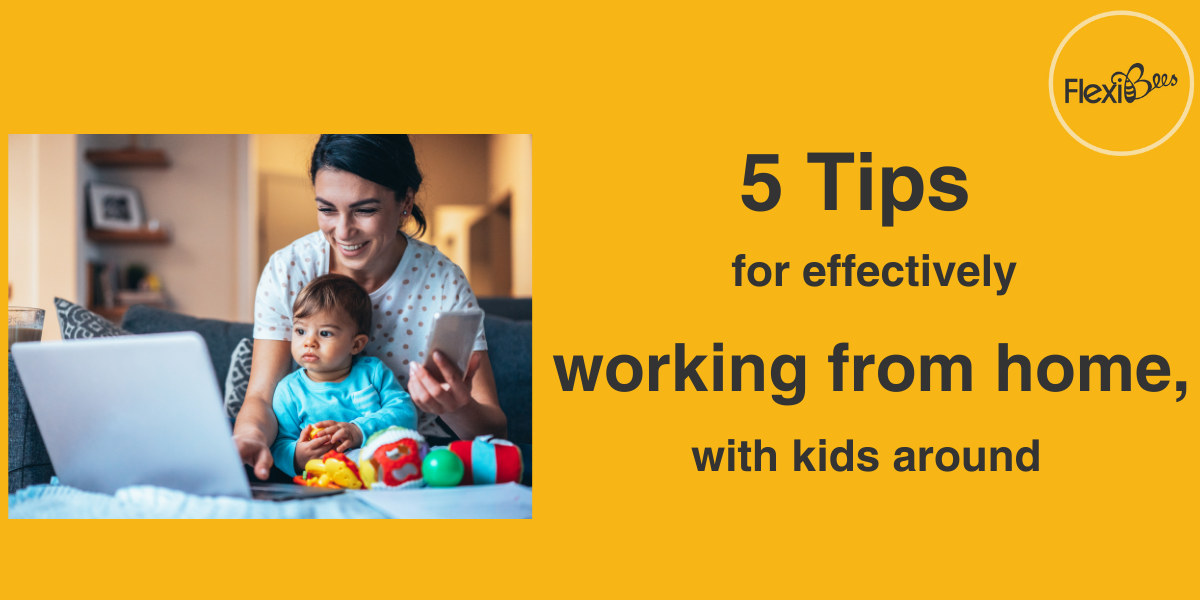5 Tips for effectively working from home, with kids around
Most parents who work from home face extra challenges when trying to balance the demands of work and home life especially if their child isn’t at an age to go to school or during vacations when they are home.
Though many parents have had a “one-off working-from-home day” when a kid is sick or the weather is bad, the reality of working remotely every single day alongside your kids would have been a “steep learning curve” for a lot of people.
Below are five simple tips for implementing an effective work-from-home set-up that does justice to your work as well as to your children.
1. Create a schedule
As a parent, the best policy is to create a schedule that replicates their school day or at least involves activities that they can indulge in themselves while you are at work without interruptions.
Make sure the basics like breakfast and showers are taken care of before you start your work day. Involve them in the basic household chores like cleaning or laying the table, as it will keep them involved and also give you some help. This will also inculcate in them an understanding of the efforts you put in as a caregiver and a parent.
Make use of their nap time to complete as many tasks that require deep thought, and concentration at work, and schedule your meetings accordingly as it gives a completely peaceful environment to catch up on your work. Prioritizing your tasks in the nature of the attention span it requires will help a lot. Example if you need to write a report and analyse some data you will need a peaceful environment and nap time will be perfect to deal with this.
2. Communicate, even more than you think is necessary
Communication is the No. 1 thing you have to be “cognizant of and thinking about all the time.”
It’s Okay to be transparent about the fact that you’re also juggling the needs of your kids, so your co-workers aren’t caught by surprise.
For example, if you’re on a conference call, it’s acceptable to sometimes say, “Hey, just a heads up, I might have my child who can walk into this room, and I will handle it and get right back to you.”
It can also be helpful to create a spreadsheet with your manager and the rest of your team, where you each outline your emergency contact information and your availability for virtual meetings.
You should come together and talk about what’s going to work best for everyone,
This might mean more frequent, but casual meetings, or it might mean fewer meetings altogether.
Speaking up when you need a break or extra support is important. And it doesn’t hurt to also offer support or coverage for another colleague who may need a break as well.
3. Set boundaries with your children
On top of communicating with your colleagues, it’s crucial to set boundaries with your kids when working remotely, especially if they’re school-aged.
It may be helpful to allow your kids to develop hobbies that keep them occupied, like reading or painting. In a special event you can give them some TV time , but you need to explain to your kids that this is a special thing, and this freedom won’t go on forever.
Outside of being more flexible about screen time, you should also tell your kids when you need to be in “do not disturb” mode.
You can do a little arts and crafts project where they can be busy for some time. A good idea will be to ask them to make a ‘stop’ sign and a ‘go’ sign for your door, so they know when they see a ‘stop’ sign that they shouldn’t come in unless some big, crazy thing is going on. If the green ‘go’ sign is there then they can walk right in.”
If you’re a work-from-home employee and don’t have a designated office space, then setting clear boundaries with your kids can be helpful.
Have a place where you have private times, it could be your bedroom, a guest room, or a study or wherever you can find a place where you can have uninterrupted, quiet space.
And to help keep this space quiet, you can use PostIt on the doors or any signage like the stop and go signals on the door.
4. Take breaks
Though you may feel pressured to put in some extra time while working remotely to prove to your team that you’re working, you must carve out time to take a break.
Taking a lunch break, or tea breaks helps to feel refreshed and ready to get back to work, walk around or say “hi” to your kids
When taking this time to unplug and reset, it’s perfectly fine to communicate to your boss with a message such as I am going to be away from my desk for the next 30 mins.
5. Alternate shifts with your partner or ask for support
If you’re in a position where both you and your spouse are working from home, alternating shifts with your partner can make working remotely a lot easier, allowing each other to have uninterrupted work time.
If switching shifts with your spouse is not an option, then a strict schedule and extra planning will be key to maximizing your day.
If you have a special meeting or additional hours you need to put in, you can seek help from family or friends who can pitch in for a few hours to keep your kids occupied while you work. Keep your house help or caregiver informed about such situations.
Conclusion
The pandemic did set a tone for working from home with kids around, it also has helped us develop a routine that can be effective. These tips will help you become more efficient and productive as you work from home and also be around for your kids. So set all your apprehensions aside about this new way of working and balance your work and life like a pro.

